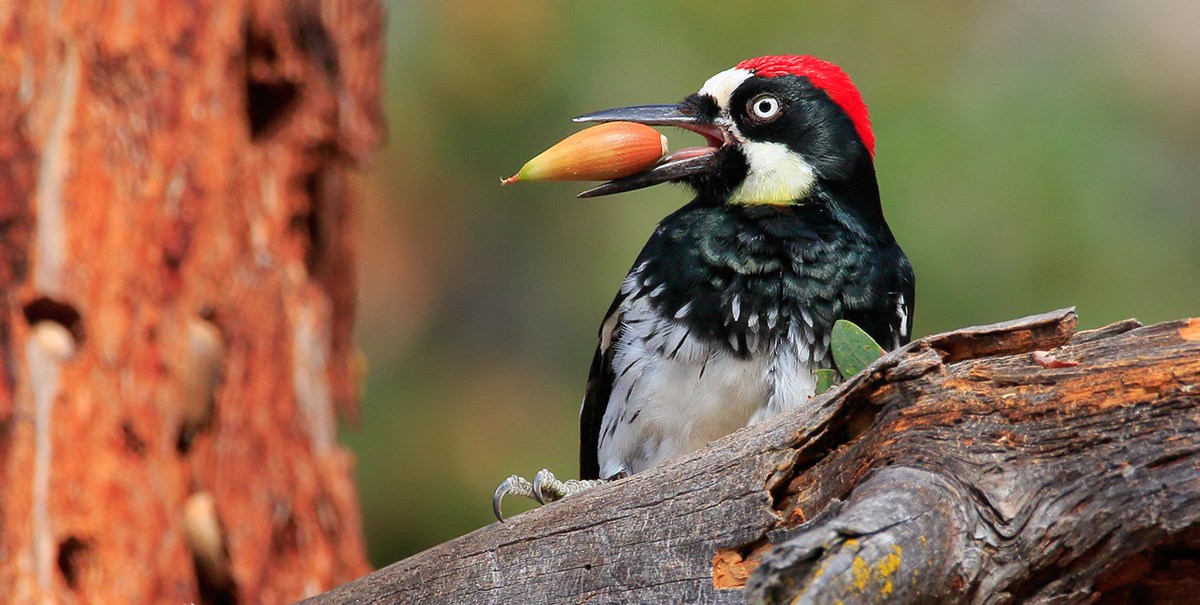Understanding Woodpeckers in Florida: Actions, Variety, and Environments
Understanding Woodpeckers in Florida: Actions, Variety, and Environments
Blog Article
Discover the Fascinating Globe of Woodpeckers: Whatever You Required to Know
The world of woodpeckers is a world filled with special behaviors, elaborate adjustments, and a diverse selection of species. From their environments and circulation patterns to their feeding practices and specialized physiological attributes, woodpeckers have actually long astounded the interest of ornithologists and nature lovers alike.
Woodpecker Habitats and Circulation
Woodpeckers occupy a diverse array of environments worldwide, showcasing versatility in their circulation patterns. These durable birds are discovered in woodlands, forests, savannas, and deserts throughout different continents, showing their capacity to flourish in different weather conditions. In The United States and copyright, for instance, woodpeckers can be identified in both coniferous and deciduous woodlands, using their strong beaks to forage for insects and create nesting cavities in trees. Similarly, in Africa, certain woodpecker species have actually adjusted to dry settings, such as the acacia forests, where they play a crucial role in controlling insect populaces.
:max_bytes(150000):strip_icc()/GettyImages-1094628502-a831e9c1be004c05b057f488ff819127.jpg)
Feeding Behaviors and Diet Regimen
Woodpeckers utilize their strong beaks to drill into the bark of trees, penetrating for pests and larvae concealed underneath the surface. In addition to pests, woodpeckers likewise take in nuts, seeds, fruits, and sap.
Woodpeckers are understood for their drumming behavior, which offers not just to interact with other woodpeckers but likewise to locate food. The quick drumming audio is produced by the bird pecking on resonant surface areas like dead trees or steel poles. This habits can attract insects concealed in the timber, enabling the woodpecker to find their existence and feed on them.
Distinct Adaptations for Tree Climbing
In their experienced search of insects concealed within tree bark, woodpeckers have actually evolved remarkable physiological features that outfit them with special adaptations for reliable tree climbing. One of the vital adaptations is their zygodactyl feet, with 2 toes pointing onward and two aiming backwards, providing a solid grip on tree trunks. This customized foot plan permits woodpeckers to hold on to upright surfaces easily, enabling them to go up and down trees with dexterity. Additionally, woodpeckers have rigid tail plumes that function as a supportive prop while they climb up, assisting in balance and security. Their strong, chisel-like beaks are not only used for exploration into wood yet likewise for clutching onto see this website bark as they rise tree trunks. Furthermore, woodpeckers have solid neck muscles and an one-of-a-kind skull framework that absorb the effect of consistent pecking, enabling them to climb up up and down without causing damage to their minds. These adaptations showcase the extraordinary transformative layout that enables woodpeckers to navigate trees with precision and effectiveness.
Diverse Woodpecker Types Worldwide
With over 200 various species spread throughout different habitats worldwide, the household of Picidae incorporates a remarkable variety of woodpeckers. These birds can be located in woodlands, timberlands, savannas, and also metropolitan locations, showcasing their flexibility to various atmospheres. From the famous Northern Flicker in The United States And copyright to the vibrant and elusive Crimson-backed Flameback in Asia, each woodpecker species displays distinct qualities in terms of tuft, habits, and habitat preference.
Woodpeckers differ significantly in size, with the diminutive Downy Woodpecker gauging around 6-7 inches basics in size, while the powerful Lineated Woodpecker can rise to 17 inches - Woodpeckers in Florida. Their beaks additionally are available in different sizes and shapes, mirroring their feeding routines. Some species specialize in drawing out insects from tree bark, like the Acorn Woodpecker, while others, such as the Black-cheeked Woodpecker, eat fruits and seeds

Preservation Initiatives and Challenges
Preservation efforts for woodpecker populaces are critical in reducing the effect of environment loss and various other threats facing these diverse avian species. Woodpeckers face different difficulties to their survival, mostly as a result of logging, urbanization, environment adjustment, and intrusive types. To attend to these concerns, preservation initiatives concentrate on shielding and recovering woodpecker environments, implementing sustainable forestry methods, and increasing awareness regarding the significance of these birds in environments.
One considerable difficulty in woodpecker preservation is the fragmentation of their environments, bring about separated populaces that are a lot more prone to extinction - Woodpeckers in Florida. Guardians work to produce wildlife corridors and protected locations that attach these fragmented environments, enabling woodpeckers to move between different locations for feeding, reproducing, and shelter

Conclusion
Finally, woodpeckers are fascinating birds with special adaptations for tree climbing and feeding habits. Get the facts They can be located in varied habitats worldwide, facing preservation challenges as a result of environment loss and human tasks. Comprehending their environments, diet regimens, and habits is critical for conservation efforts to safeguard these crucial bird varieties. Further research and conservation activities are required to guarantee the survival of woodpeckers in the wild.
Report this page